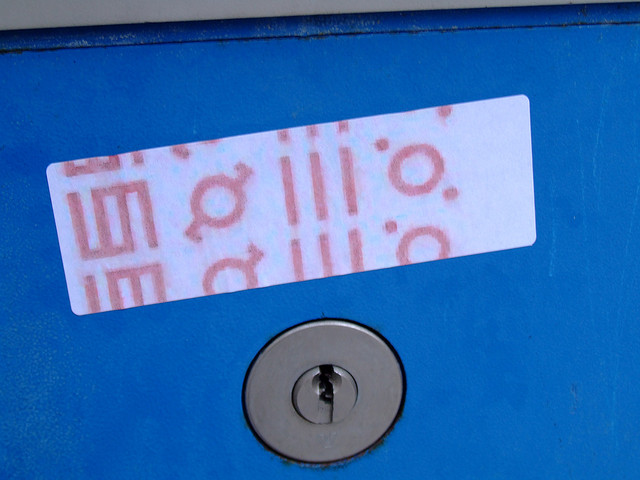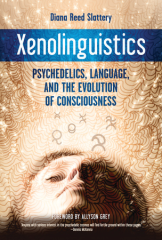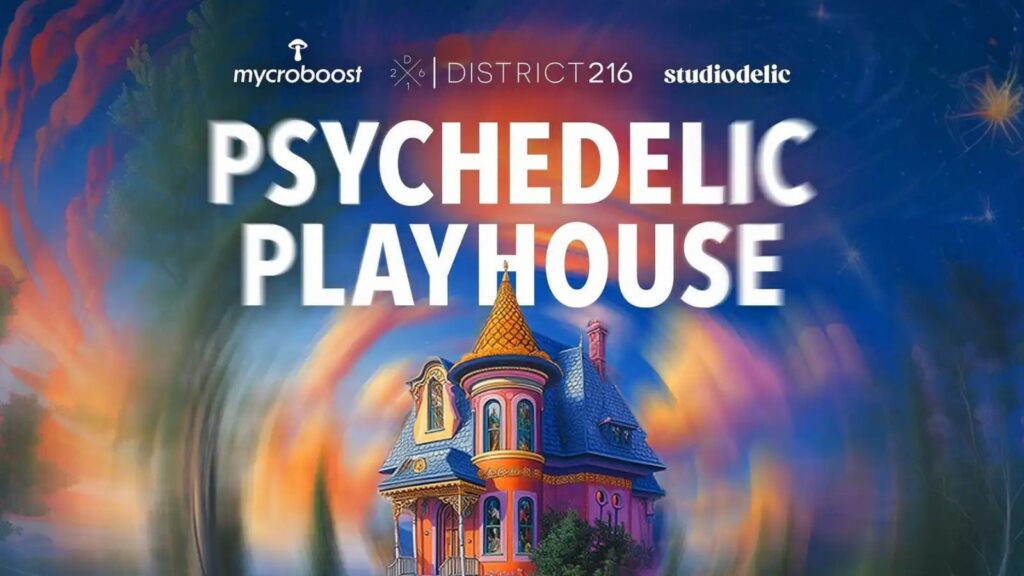The following is excerpted from Xenolinguistics: Psychedelics, Language, and the Evolution of Consciousness, published by North Atlantic Books/Evolver Editions.
“In both art and science now, the matter of consciousness is high on the agenda. Science is trying hard to explain consciousness, with distinctly limited success. It seems to pose the most intractable of problems. For the artist, consciousness is more to be explored than to be explained, more to be transformed than understood, more to be reframed than reported.” —Roy Ascott , 2003
Psychonauts, at some point, due to the nature of their experiences, become philosophers by default. I came out of my second DMT adventure spluttering, “what-the-fuck.” Over and over. Every thought that arose in response to the experience was immediately translated into a resounding “what-the fuck.”
Finally the sentence became “It’s the what-the-fuck drug.” I was expressing the inexpressible content of a head-on collision with the Unspeakable in the only words I could find in the proper emotional register: befuddlement, bewilderment, and the powerful sense that the whole thing was so improbable that to “tell it like it is” would be to sound absurd. Really absurd. This was accompanied by a lot of helpless laughter and head-shaking, as I was dumped out of darshan with the Unspeakable in its most alien manifestation ever. As words returned, the problem deepened. How could I say that an experience I just had was both patently absurd and more real than real, at the same time? How could this be so real, and at the same time have its reality so in question, so laughable, when it so departs from the consensus of what is real and what is not back at baseline?
The experience threw a sparklyspanner in the cognitive machinery, forcing me to go back to basic assumptions in my thought processes. Philosophy begins with these basic questions of knowing and being. In classical Western philosophy, epistemology is the study of knowing, and ontology is the study of being. How could I say that an experience I just had was both patently absurd, and more real than real, at the same time?
The Ontological Dilemma
The ontological status of psychedelic experience—the reality question—pervades psychonautic experience and hence psychedelic research. Was that real? What is reality? What, “really,” is a hallucination? What can we learn from profoundly altered perception of both the world around us and of the mind manifesting in extremely novel ways? Is reality a simple given, or are we complicit in its construction? As Robert Anton Wilson quipped, “Reality is the line where rival gangs of shamans fought to a standstill.”
To argue about what reality is or isn’t, when reality is the standard by which we decide what is and what isn’t, is a slippery proposition, as circular and self-referential as consciousness attempting to study itself. And who is the authority on what is real? I submit that authority in the psychedelic sphere does not depend on advanced degrees or professional standing, though these are not in short supply among psychonauts. Rather their authority comes from evidence of practice, especially self-reflective practice, combined with rhetorical skill. Thus, the authority of John Lilly’s many books comes not only from his medical degree, or from the fact that he received funding for his early LSD research from government agencies. He persuades with passion when he continues his research past the illegalization boundaries. His phenomenological integrity persuades when he is relating not only research results, but his dangerous mistakes and, from a baseline viewpoint, outlandish alien contacts and other outlier phenomena. Of course, the fact that Dr. Lilly continued his psychonautic practice after illegalization, and fell into a lengthy and dangerous ketamine addiction, destroyed his “authority” in the eyes of authorized research. Lilly persuades (or not) because another psychonaut can read his material and know—because of the authority of his or her own self-evidential knowledge—that Lilly is telling it like it is—or is not—for that reader. This does not mean that a report from the psychedelic sphere must totally match my own in every detail to be of use, or that I need to recognize my own experience in a category of types of experience. My report of living in San Francisco would no doubt differ in many details from the reports of other residents, but we would most likely recognize that we are talking about the same place. This process has also been called “inter-subjective validation.”
Reality Reviewed
For my own purposes, I differentiate between the armchair traveler, who writes about the territory based solely on the reports of others, never having made the trip him- or herself; the tourist, who goes once or twice and is found in a state of “Oh Wow” and declaring authority (like a person who has spent a week in Paris, certain they know the city intimately); commuters, who have traveled many times, usually with some purpose in mind; and expatriates, who have relinquished citizenship in the default world and lose their basis and means of comparison, as Lilly suggests. Permanent or near permanent residency has its risks, as can be seen in Marcia Moore’s experience with ketamine, ending in death (M. Moore and H. Alltounian 1978). Lilly himself became for a period a resident of the ketamine world, including a close call of near-drowning.
Douglas Turnbull’s characterization of early map-making comes into play. Two explorers to the same area compare notes, logs, and sketches, out of which an assemblage and someday maps can be made. Truth is a negotiated, persuaded and/or recognized truth. Turnbull argues that “scientific knowledge can be seen as the contingent assemblage of local knowledge” (Turnbull 2000).
Does the delusion of one visionary ecstatic validate the delusion of another? How many deluded, or illuminated ecstatics does it take to make a reality? PKD proved that it only takes one. But two is better. (T. McKenna in Sutin 1991)
I suggest Turnbull’s map-making as a starting place toward psychonautic (personal, first-person, individual) psychedelic knowledge, building a collection of what Turnbull terms “local knowledges.” These localities can be as particular as a single individual’s three-paragraph trip report posted to Erowid, or as extensive as John Lilly’s or Timothy Leary’s lifework.
A locality can be represented by the collective practices and knowledge of a culture, such as the Mazatec mushroom culture, the Peyote Way, or an ayahuasca culture such as the Santo Daime, União do Vegetal, and Barquinha churches, or Shipibo shamanism. Each locus of knowledge, from the individual to the group, produces its own accounts of experience in the psychedelic sphere, its own descriptions of the landscapes, its own sense of the intentionality of the voyage from baseline outward/inward and the return to ordinary reality. From these experiences descriptions are written, interpretations arise, songs, paintings, software, and dances emanate; rituals are enacted. A body of knowledge collects. Maps can be envisioned, landmark by negotiated landmark.
Waking up in the total alien dreamworld—seeing what one has comfortably called reality and all its rules cheerfully dismantled by a bunch of matter of fact prankster world hackers [gee we thought you’d enjoy it] (session report 01.07.14, 2 g dried Stropharia cubensis)
What reality are you in when the munchkins show you what is clearly the machinery of reality? enfolding unfolding into and out of itself (session report 09.12.31, 4 g dried amazonas) –William James—Potential Forms of Consciousness
Programming set for the psychonaut can determine the reality of the particular exploration. William James’s iconic passage about his nitrous oxide experiences, often quoted as an epigraph beginning an article on some psychedelic matter (an indirect example of inter-subjective validation), is rhetorically powerful. It represents a founding text on the topic of psychonautics, and a text that has programmed the set of many psychedelic researchers, both authorized and unauthorized, toward their topic on the one hand, and toward their own trips, which are rhetorically sensitive to texts. The passage is quoted at length and then analyzed rhetorically.
Nitrous oxide and ether, especially nitrous oxide, when sufficiently diluted with air, stimulate the mystical consciousness in an extraordinary degree. Depth beyond depth of truth seems revealed to the inhaler. This truth fades out, however, or escapes, at the moment of coming to; and if any words remain over in which it seemed to clothe itself, they prove to be the veriest nonsense. Nevertheless, the sense of a profound meaning having been there persists; and I know more than one person who is persuaded that in the nitrous oxide trance we have a genuine metaphysical revelation.2
Some years ago I myself made some observations on this aspect of nitrous oxide intoxication, and reported them in print. One conclusion was forced upon my mind at that time, and my impression of its truth has ever since remained unshaken. It is that our normal waking consciousness, rational consciousness as we call it, is but one special type of consciousness, whilst all about it, parted from it by the filmiest of screens, there lie potential forms of consciousness entirely different. We may go through life without suspecting their existence; but apply the requisite stimulus, and at a touch they are there in all their completeness, definite types of mentality which probably somewhere have their field of application and adaptation. No account of the universe in its totality can be final which leaves these other forms of consciousness quite disregarded. How to regard them is the question—for they are so discontinuous with ordinary consciousness. Yet they may determine attitudes though they cannot furnish formulas, and open a region though they fail to give a map. At any rate, they forbid a premature closing of our accounts with reality.
Looking back on my own experiences, they all converge towards a kind of insight to which I cannot help ascribing some metaphysical significance. The keynote of it is invariably a reconciliation. It is as if the opposites of the world, whose contradictoriness and conflict make all our difficulties and troubles, were melted into unity. (James 1902)
In the first paragraph, James identifies his personal experience with these substances as the source of his knowledge about them. He speaks with the authority of one who has been there, giving a dose protocol tip: especially nitrous oxide, when sufficiently diluted with air. He states the hallmark of ineffability (a standard that he applies to mystical experiences as a whole)—a sense of profound meaning experienced to which language is insufficient, even ridiculous. The rest of the long passage illustrates the apophatic device of saying that what you have just asserted cannot be articulated: the depths of meaning in the psychedelic experience.
The second paragraph persuades on many levels. The apodictic nature of the experience is asserted: One conclusion was forced upon my mind at that time, and my impression of its truth has ever since remained unshaken. The certainty produced by the experience is persistent despite its ineffability. That certainty has the effect of holding open, like a foot in a cosmological door, the possibility of uncertainty, the appropriateness of uncertainty, in fact, in the face of the field of unknowing opened by the experiences: they may determine attitudes though they cannot furnish formulas, and open a region though they fail to give a map. At any rate, they forbid a premature closing of our accounts with reality.
A hundred years later, we live in a historical moment where consciousness itself is not part of the “Everything” covered by the physicist’s “Theory of Everything,” a denial of inner worlds that in James’s time was already in progress. James’s language is strong: forced, forbid, unshaken. The novelty of the experience, How to regard them is the question—for they are so discontinuous with ordinary consciousness, previews later models of discrete states of consciousness. The word “alien” is used by many to describe both the bizarre phenomena encountered and the epistemological rupture that demands reframing not only of consciousness but of “life, the universe, and everything.” The heart of the experience is named: The keynote of it is invariably a reconciliation. It is as if the opposites of the world, whose contradictoriness and conflict make all our difficulties and troubles, were melted into unity. This is the coniunctio oppositorum of alchemy, the union of opposites.
It is associated with the lapis or philosopher’s stone, which, according to Jung, is both the beginning and goal of the alchemical process (Jung 1953).
James’s passage persuades at a pervasively seductive level—inviting the reader into the psychedelic experience. The filmiest of screens suggests Salome’s dance of the seven veils and resonates with the earlier reference of clothing (inadequately) the presumably naked truth, depth upon depth. The language of stimulus and touch reinforces this seduction. The passage tunes the seduction from the filmiest of screens to melted into unity, the hierosgamos or sacred marriage. The seduction promises no less than the dissolution of all our difficulties and troubles. The self-experiment beckons.
Is it a fundamental right of a conscious being to say—this is what is real for me, at this moment in time, subject to future revision? I expose my position as a cognitive libertarian by posing these questions. The final determination of what is real and what is myth for the individual psychonaut is a matter of personal experience, epistemological preference, and relative commitment to the proprieties of consensus reality.
Teaser image by jaqian, courtesy of Creative Commons license.
















